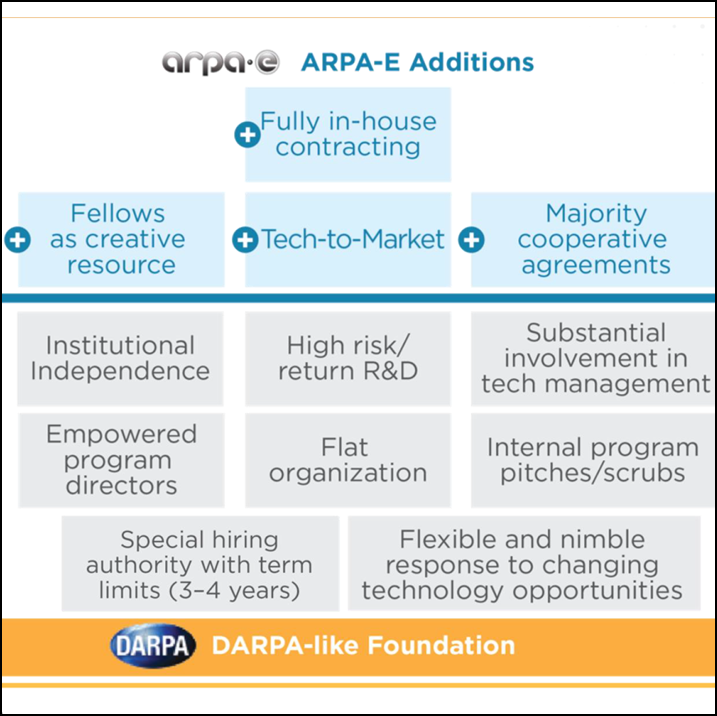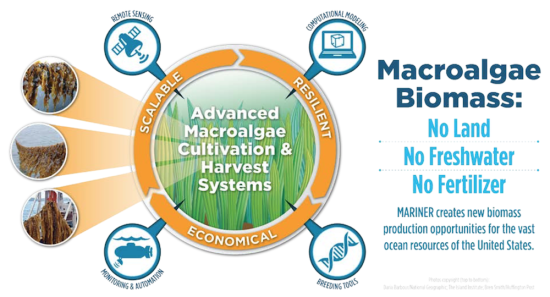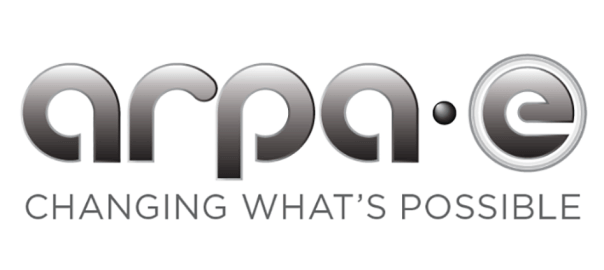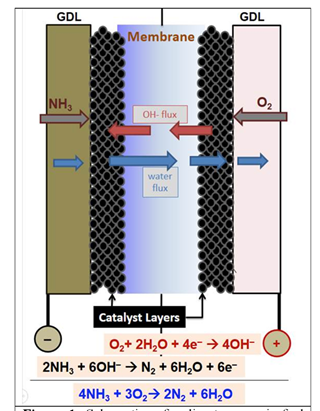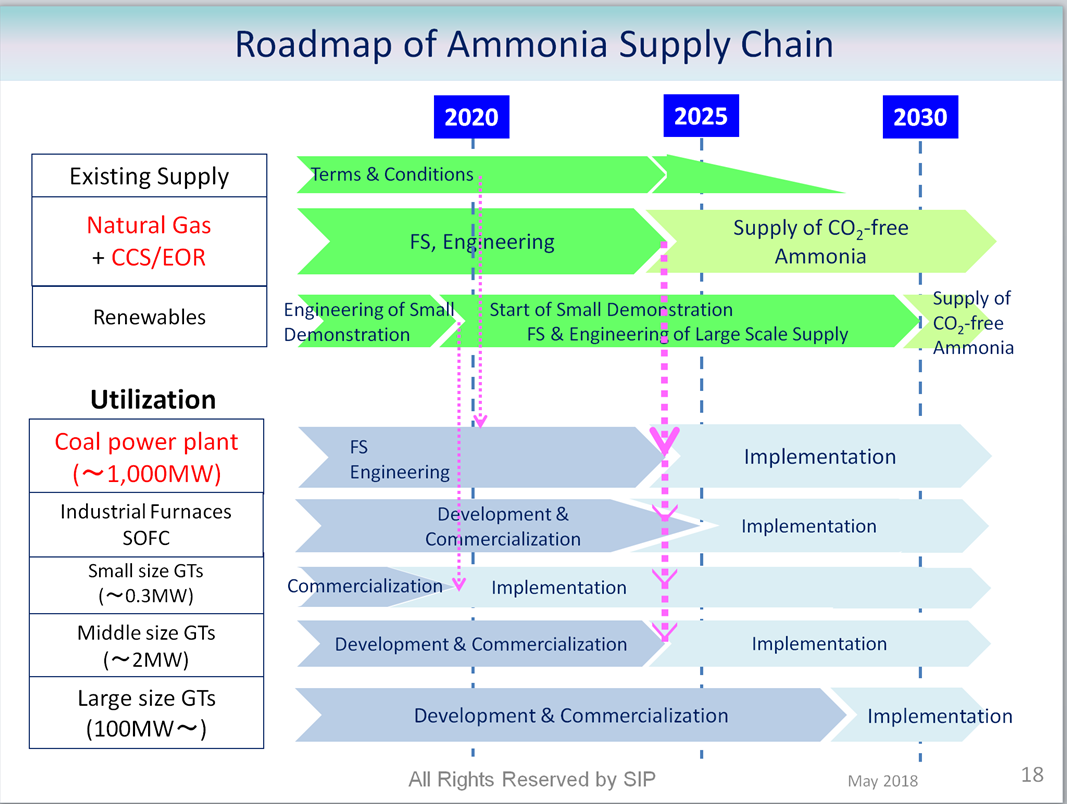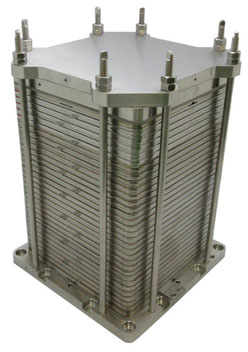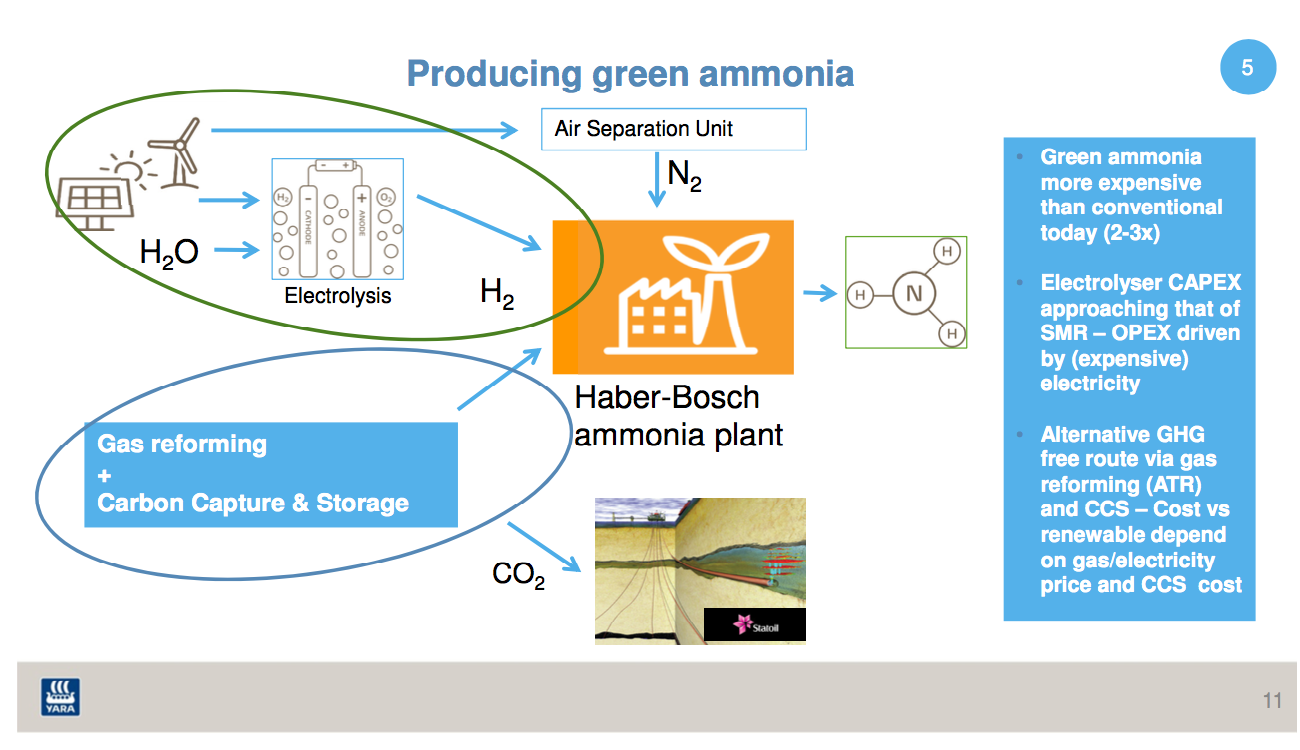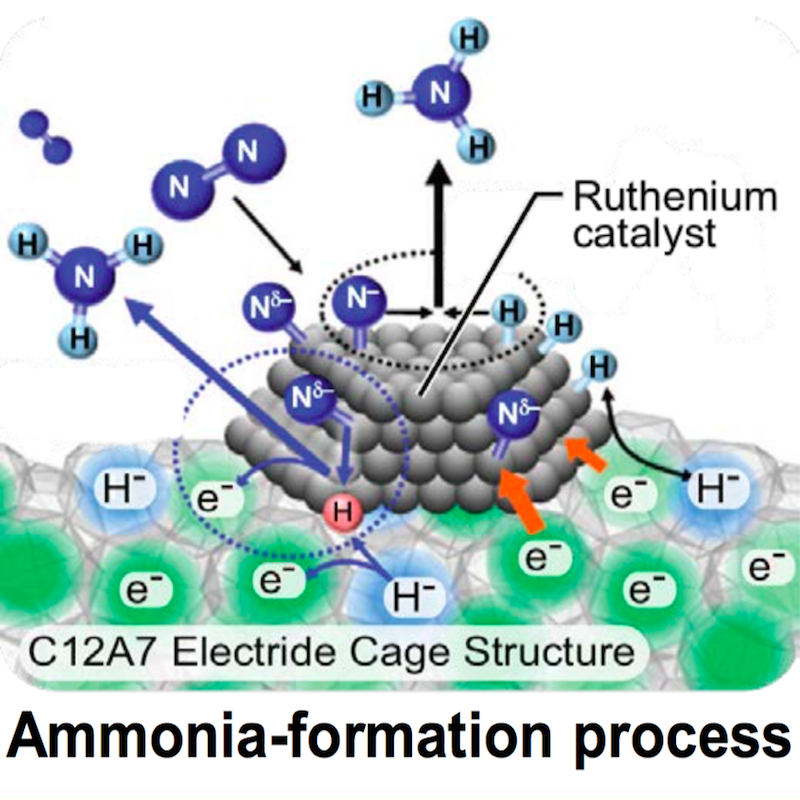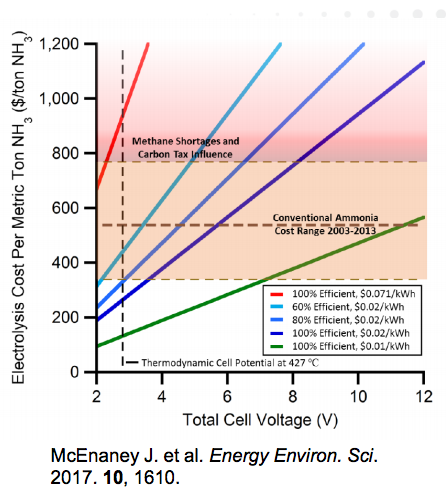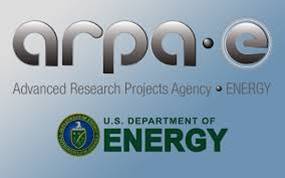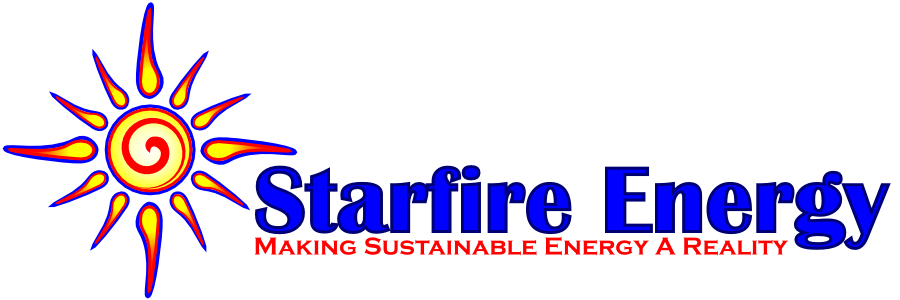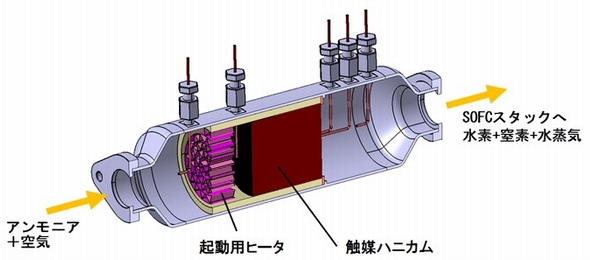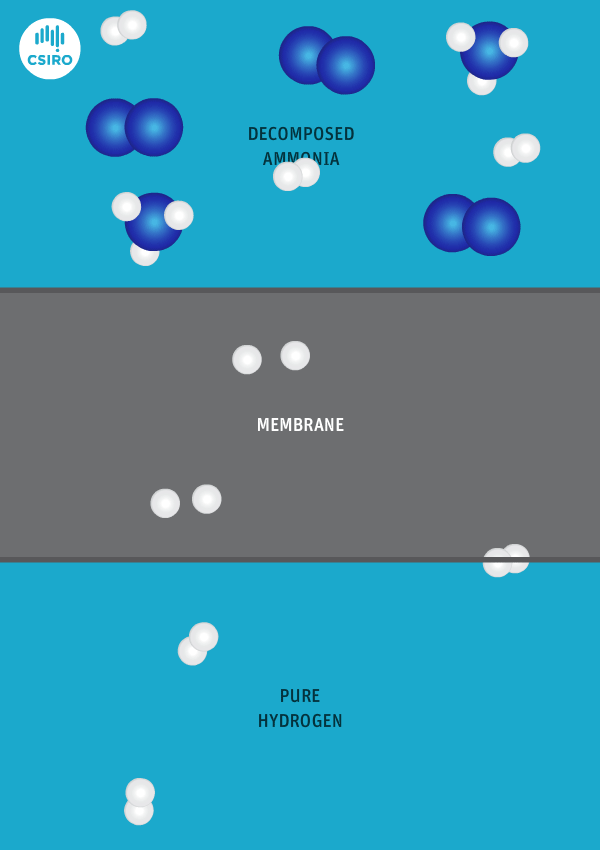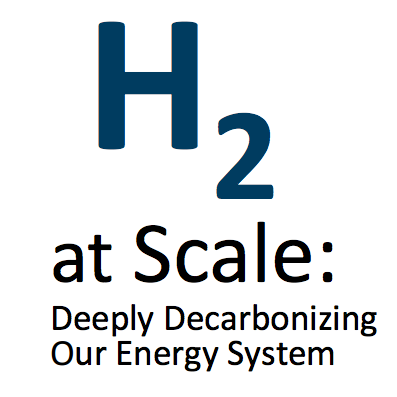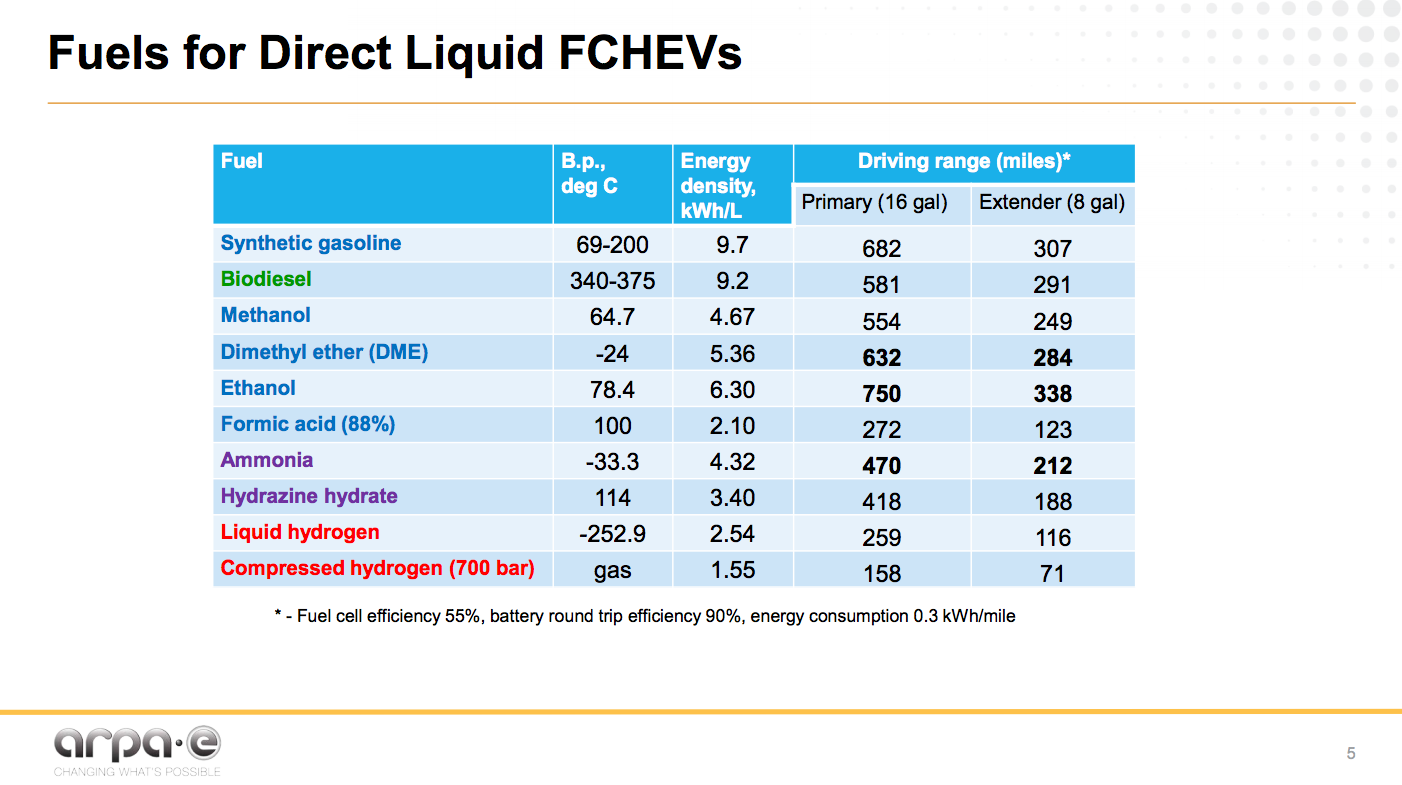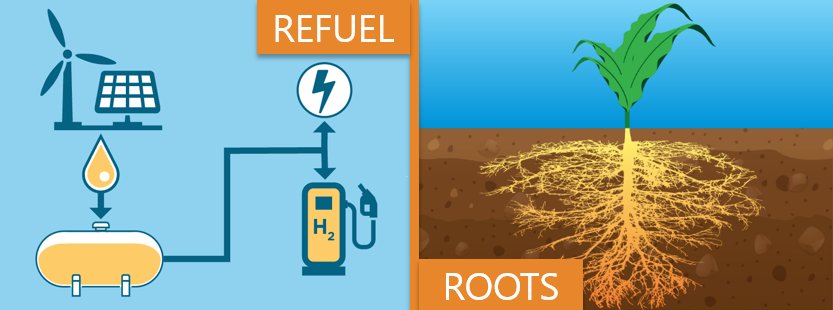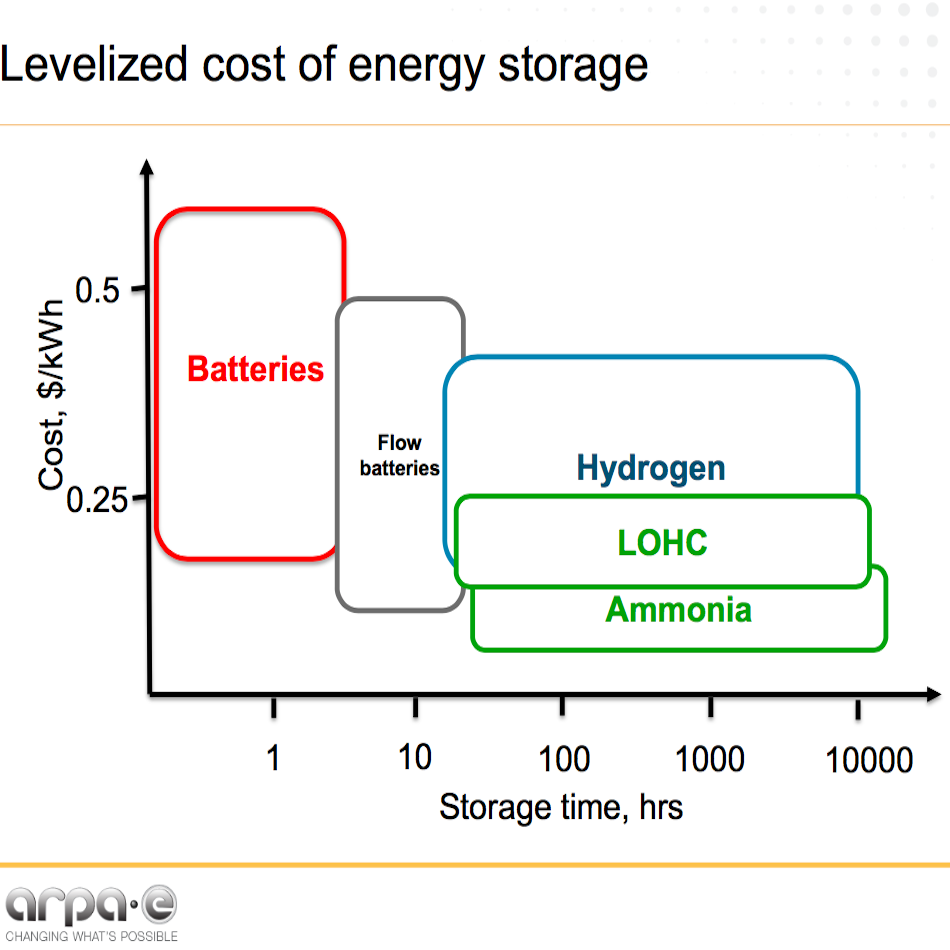This week the United States Department of Energy’s Advanced Research Projects Agency – Energy (ARPA-E) issued a Request for Information under the title “Next Generation Ammonia System Integration Project.” This is a strong signal that ARPA-E intends to see the ammonia energy technologies in its portfolio through to commercial fruition.
Content Related to ARPA-E
Article
ARPA-E Issues RFI for Next-Gen Ammonia System Integration
Stephen H. Crolius February 27, 2020
Presentation
Arpa-E Refuel Program: Distributed Production of Ammonia and Its Conversion to Energy
Ammonia, which has high energy density in easily produced liquid form and can be converted to electric or motive power, is considered to be an almost ideal non-carbon energy vector in addition to its common use as a fertilizer. It can be manufactured anywhere using the Haber-Bosch process, effectively stored, transported and used in combustion engines and fuel cells as well as a hydrogen carrier. Transition from fossil fuels as the energy source and feedstock to intermittent renewable energy sources will require a shift from large scale Haber-Bosch plants (1,000 – 1,500 t/day) to distributed ammonia production matching electrical power…
Presentation
Energy Storage through Electrochemical Ammonia Synthesis Using Proton-Conducting Ceramics
Neal P. SullivanLiangzhu ZhuChuancheng DuanRyan O'HayreMax PisciottaLong LeCarolina Herradon HernandezMichelle ButlerCanan KarakayaRobert J. KeeFred JahnkeHossein Ghezel-Ayagh
In this presentation, we provide an overview of an ambitious project to store renewable energy through electrochemical synthesis of ammonia. The joint project between the Colorado School of Mines (Golden, CO) and FuelCell Energy, Inc. (Danbury, CT) is supported through the U.S. Department of Energy ARPA-E ‘REFUEL’ program. The research and development team seeks to harness the unique properties of proton-conducting ceramics to activate chemical and electrochemical reactions for efficient and cost-effective synthesis of ammonia. The system concept is shown in Figure 1; renewable electricity is used to drive electrolysis of the H2O feedstock to form hydrogen. This electrochemically produced…
Article
ARPA-E solicits technologies for nitrogen extraction from seawater using seaweed
Trevor Brown May 09, 2019
NEWS BRIEF: On Monday, May 13, the US Department of Energy ARPA-E will close its request for information (RFI) regarding Quantification of Effectiveness of Nutrient Bioextraction by Seaweed. By using environmental remediation (nitrogen removal) as a mechanism for ammonia production (nitrogen recycling), this novel research area could connect together two phases of industry: production and end-of-life management. Rather than saying that this addresses both ends of a value chain, it might be more appropriate to say that this holds promise for the circular economy of ammonia energy.
Article
ARPA-E request for information: Pre‐pilot and pilot projects to scale, mature, and advance technologies
Trevor Brown April 17, 2019
ANNOUNCEMENT: The US Department of Energy's Advanced Research Projects Agency (ARPA-E) has published a Request For Information (RFI) focused on supporting scale-up demonstrations of ARPA-E technologies. Unlike normal ARPA-E funding agreements, which typically provide 5%-20% of the financing for bench-scale projects within laboratories, this RFI is geared towards industrial pilot projects, for which ARPA-E would provide "at least 50% cost share."
Article
More Progress for Automotive-Oriented Direct Ammonia Fuel Cells
Stephen H. Crolius January 03, 2019
Shimshon Gottesfeld’s paper The Direct Ammonia Fuel Cell and a Common Pattern of Electrocatalytic Processes leads with a big number: “A record power density of 450 mW/cm2 has been demonstrated for a direct ammonia fuel cell [DAFC] using an alkaline membrane electrolyte.” We know it’s big because it’s 80% higher than the 250 mW/cm2 that Gottesfeld’s team had achieved in the fall of 2017 and that Gottesfeld, Adjunct Professor of Chemical Engineering at the University of Delaware, reported at the November 2017 NH3 Energy+ Topical Conference.
Article
NH3 Energy Implementation Conference: A Brief Report
Stephen H. Crolius November 14, 2018
The 2018 NH3 Energy Implementation Conference, the first of its kind, took place on November 1 in Pittsburgh, Pennsylvania in the U.S. The focus of the Conference was on steps – current and future – that will lead to implementation of ammonia energy in the global economy. At the highest level, the Conference results validated the relevance and timeliness of the theme. In the words of closing speaker Grigorii Soloveichik, Director of the U.S. Department of Energy’s ARPA-E REFUEL Program, the Conference strengthened his confidence that “ammonia is a great energy carrier ... with billions of dollars of potential in prospective markets.”
Article
Ammonia for Fuel Cells: AFC, SOFC, and PEM
Trevor Brown October 25, 2018
In the last 12 months ... IHI Corporation tested its 1 kW ammonia-fueled solid oxide fuel cell (SOFC) in Japan; Project Alkammonia concluded its work on cracked-ammonia-fed alkaline fuel cells (AFC) in the EU; the University of Delaware's project for low-temperature direct ammonia fuel cells (DAFC) continues with funding from the US Department of Energy's ARPA-E; and, in Israel, GenCell launched its commercial 4 kW ammonia-fed AFC with field demonstrations at up to 800 locations across Kenya.
Article
Yara's N-Tech Platform: Making Strides with Green Ammonia
Stephen H. Crolius April 05, 2018
Yara International, one of the world’s largest ammonia producers, is making strides in its development of green ammonia as a fertilizer, chemical intermediate, and energy carrier. The progress is documented in the company’s 2017 annual report, released last week, and in more detail in a presentation delivered in late February at the 2018 Nitrogen + Syngas Conference in Gothenburg, Sweden.
Article
Full program announced for the 2018 NH3 Event Europe
Trevor Brown February 08, 2018
The second annual European Conference on Sustainable Ammonia Solutions has announced its full program, spread over two days, May 17 and 18, 2018, at Rotterdam Zoo in the Netherlands. The international cadre of speakers, representing a dozen countries from across Europe as well as the US, Canada, Israel, and Japan, will describe global developments in ammonia energy from the perspectives of industry, academia, and government agencies.
Article
Future Ammonia Technologies: Electrochemical (part 3)
Trevor Brown December 28, 2017
This series of articles on the future of ammonia synthesis began with a report on the NH3 Energy+ conference presentation by Grigorii Soloveichik, Program Director at the US Department of Energy's ARPA-E, who categorized the technologies as being either improvements on Haber-Bosch or electrochemical (with exceptions). ARPA-E invests in "transformational, high-risk, early-stage research," and recently began funding ammonia synthesis technologies, not to make renewable fertilizer but to produce "energy-dense zero-carbon liquid fuel." This article will introduce the six electrochemical technologies currently in development with funding from ARPA-E.
Article
Progress for Low-Temperature Direct Ammonia Fuel Cells
Stephen H. Crolius December 14, 2017
Speaking at the NH3 Energy+ Topical Conference last month, University of Delaware Adjunct Professor Shimshon Gottesfeld reported on progress made by the university’s direct ammonia fuel cell (DAFC) project. Evidently, the UDel team is now a big step closer to its goal of establishing the DAFC as a viable automotive power plant.
Article
Improvement of Haber-Bosch: Adsorption vs. Absorption
Trevor Brown December 01, 2017
At the recent NH3 Energy+ Topical Conference, Grigorii Soloveichik described the future of ammonia synthesis technologies as a two-way choice: Improvement of Haber-Bosch or Electrochemical Synthesis. Two such Haber-Bosch improvement projects, which received ARPA-E-funding under Soloveichik's program direction, also presented papers at the conference. They each take different approaches to the same problem: how to adapt the high-pressure, high-temperature, constant-state Haber-Bosch process to small-scale, intermittent renewable power inputs. One uses adsorption, the other uses absorption, but both remove ammonia from the synthesis loop, avoiding one of Haber-Bosch's major limiting factors: separation of the product ammonia.
Article
The Future of Ammonia: Improvement of Haber-Bosch ... or Electrochemical Synthesis?
Trevor Brown November 17, 2017
During our NH3 Energy+ Topical Conference, hosted within AIChE's Annual Meeting earlier this month, an entire day of presentations was devoted to new technologies to make industrial ammonia production more sustainable. One speaker perfectly articulated the broad investment drivers, technology trends, and recent R&D achievements in this area: the US Department of Energy's ARPA-E Program Director, Grigorii Soloveichik, who posed this question regarding the future of ammonia production: "Improvement of Haber-Bosch Process or Electrochemical Synthesis?"
Presentation
Future of Ammonia Production: Improvement of Haber-Bosch Process or Electrochemical Synthesis?
Ammonia, the second most produced chemical in the world (176 million tons in 2014), is manufactured at large plants (1,000 – 1,500 t/day) using Haber-Bosch process developed more than hundred years ago. A simple reaction of nitrogen and hydrogen (produced by steam methane reforming or coal gasification) consumes about 2% of world energy, in part due to the use of high pressure and temperature. With the global transition from fossil fuels to intermittent renewable energy sources there is a need for long term storage and long range transmission of energy, for which ammonia is perfect fit. To make it practical,…
Article
ARPA-E talks advanced hybridization, carbon-neutral liquid fuels
Stephen H. Crolius October 26, 2017
In the race to place the automotive sector on a sustainable footing, the field is dominated by just two horses: battery-electricity and hydrogen fuel cells. The economic implementation of BEVs is already well underway, with motor companies on track in 2017 to sell more than a million vehicles globally for the first time. The economic implementation of FCVs is also in progress, albeit at a much earlier stage, and has the backing of major motor companies and public-sector agencies. Given the huge leads enjoyed by electricity and hydrogen, ammonia is scarcely seen as a contending fuel. Earlier this month, though, the U.S. Department of Energy’s ARPA-E unit published an interview with two of its program managers that has an intriguing implication: the race is far from over and ammonia may yet break to the front of the pack.
Article
NH3 Fuel Association announces New Sponsor; Evening Reception at AIChE Annual Meeting on November 1st
Trevor Brown October 11, 2017
The NH3 Fuel Association has finalized details of its Sponsors Reception on Wednesday November 1 at the AIChE Annual Meeting in Minneapolis, and has also announced an additional sponsor for the conference: Starfire Energy.
Article
Development of Direct Ammonia Fuel Cells
Trevor Brown October 05, 2017
In the last 12 months ... Researchers from three continents have pushed the boundaries for direct ammonia fuel cells, setting records in power generation and continuous operation.
Article
Progress toward Ammonia-to-Hydrogen Conversion at H2 Fueling Stations
Stephen H. Crolius October 05, 2017
In the last 12 months ... Groups in Australia, Japan, Denmark, the U.K., and the U.S. all made progress with technologies that can be used to convert ammonia to hydrogen at fueling stations. This means that hydrogen for fuel cell vehicles can be handled as ammonia from the point of production to the point of dispensing.
Article
Ammonia Energy Gains Recognition from U.S. Department of Energy
Stephen H. Crolius October 05, 2017
In the last 12 months ... Ammonia energy has gained recognition from the United States Department of Energy, in both bottom-up and top-down programs. This establishes ammonia energy in the world’s largest economy as a legitimate target for both public- and private-sector investment.
Article
Japan-Brunei MCH Energy Carrier Demonstration
Stephen H. Crolius August 02, 2017
Chiyoda Corporation, the multinational chemical engineering firm that is arguably the leading proponent of the methyl cyclohexane (MCH) method of hydrogen transport, will start work this month on a project to demonstrate MCH technology in a real-world context. As reported in a July 27 company press release, the project will involve the transportation of hydrogen from Brunei to Japan in what the company states is "the world's first global hydrogen supply chain demonstration project" -- an assertion that many ammonia energy proponents will no doubt find preposterous.
Article
REFUEL Is Back on Track
Stephen H. Crolius June 28, 2017
The U.S. Department of Energy’s ARPA-E REFUEL Program, whose continued existence seemed to be in doubt two months ago, now appears to be back on track. Invitations were sent a week ago for the ARPA-E REFUEL Program Kickoff, an event that was originally scheduled for April 25 and 26 in Houston. It is now scheduled to take place in Denver on August 16, 17, and 18. Attendance will be by invitation only.
Article
The new generation of fuel cells: fast, furious, and flexible
Trevor Brown April 12, 2017
At ARPA-E's recent Energy Innovation Summit in Washington, DC, Program Director Grigorii Soloveichik presented his vision for the future of transportation: hybrid electric vehicles that combine the advantages of both plug-in battery and fuel cell technologies. This "optimal solution" will require a new generation of fuel cell that is "fast, furious, and flexible." Fast, in terms of start-up / shut-down time. Furious, in terms of energy density. And flexible, in terms of fuel choice - specifically sustainable liquid fuels, like ammonia.
Article
Ammonia for energy storage: a "revolutionary disruption"
Trevor Brown March 16, 2017
A recent opinion piece in The Japan Times predicts a "revolutionary disruption coming to the energy sector," and suggests that using ammonia for energy storage will prove to be "a game-changer at least on the scale of the shale oil and gas revolution."
Article
ARPA-E's vision for carbon neutral liquid fuels
Trevor Brown January 11, 2017
We wrote last month about the US Department of Energy funding ammonia fuel projects through ARPA-E's "REFUEL" program ("Renewable Energy to Fuels through Utilization of Energy-dense Liquids"). Although we introduced the funded projects in both the ammonia synthesis category and the ammonia fuel-use category, the REFUEL project merits further analysis as a whole because it describes a roadmap for the development of ammonia fuel systems, and identifies benchmarks for their commercial success.
Article
Carbon Pricing and the Economics of Green Ammonia
Stephen H. Crolius January 06, 2017
The United States Senate is expected to open confirmation hearings for Secretary of State nominee Rex Tillerson on January 11. Tillerson, newly retired from Exxon Mobil, became the chief executive officer of that company in 2006. He has attracted many labels since his nomination was announced, but “climate denier” is not among them.
Article
ARPA-E funding for renewable ammonia synthesis technologies
Trevor Brown December 23, 2016
Last week, ARPA-E announced funding for eight technologies that aim to make ammonia from renewable electricity, air, and water. The technological pathways being developed include adaptations of the Haber-Bosch process - seeking improvements in catalysts and absorbents - as well as novel electrochemical processes.
Article
ARPA-E’s “transformative” ammonia synthesis technologies
Trevor Brown October 28, 2016
The US Department of Energy's Advanced Research Project Agency (ARPA-E) is funding projects with a view to commercializing low- and zero-carbon ammonia synthesis technologies. Grigorii Soloveichik, ARPA-E Program Director, described the aims and challenges of his agency's initiative and introduced the technologies currently in development in his keynote presentation at the recent NH3 Fuel Conference, in September 2016.
